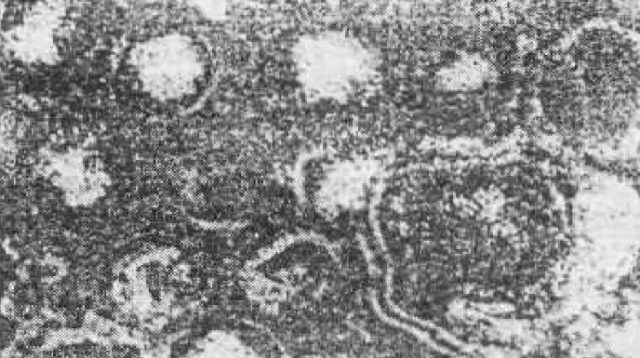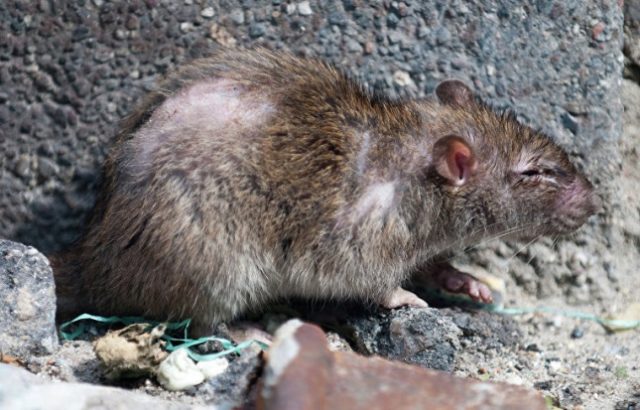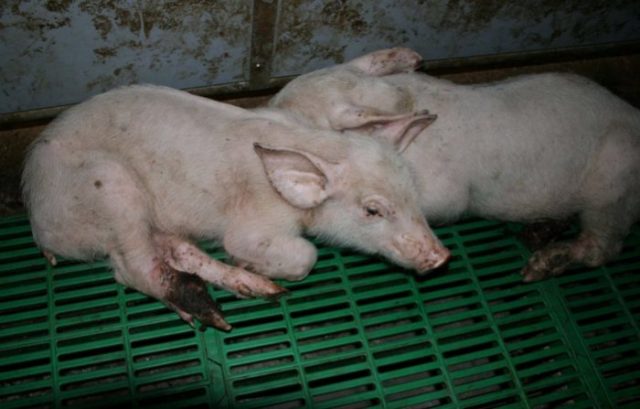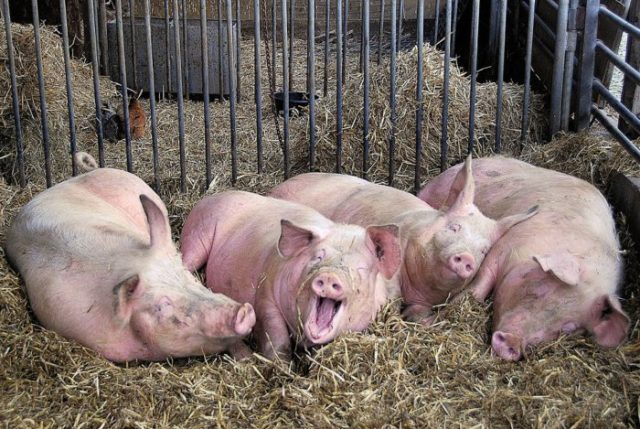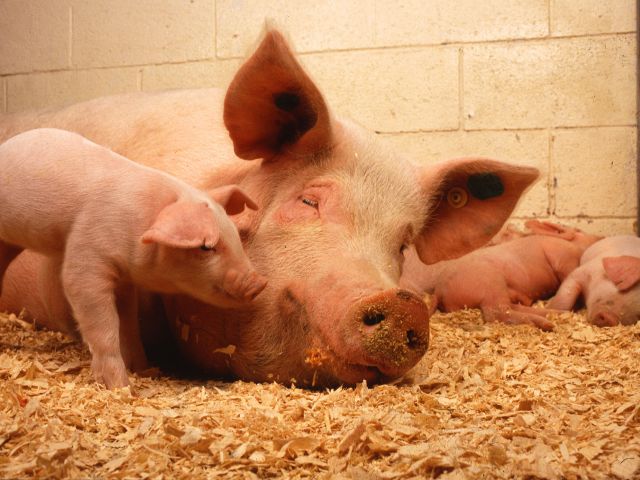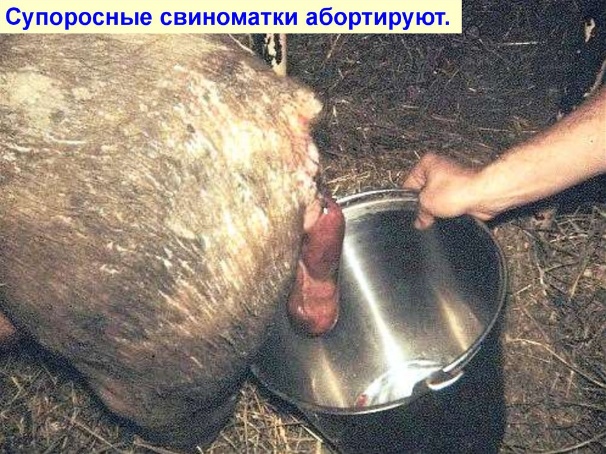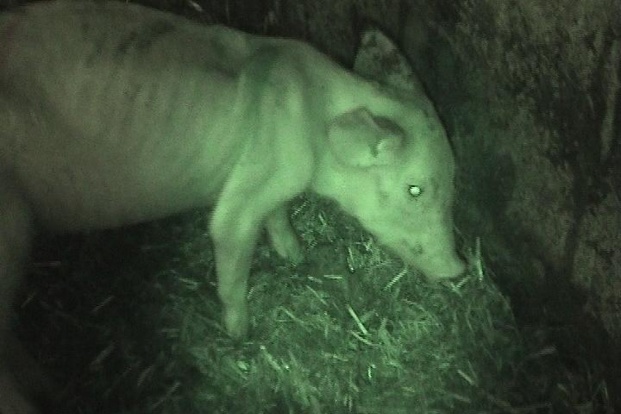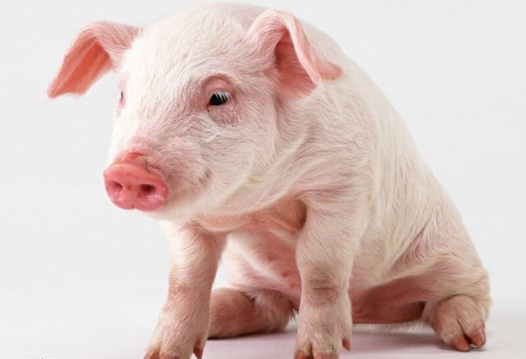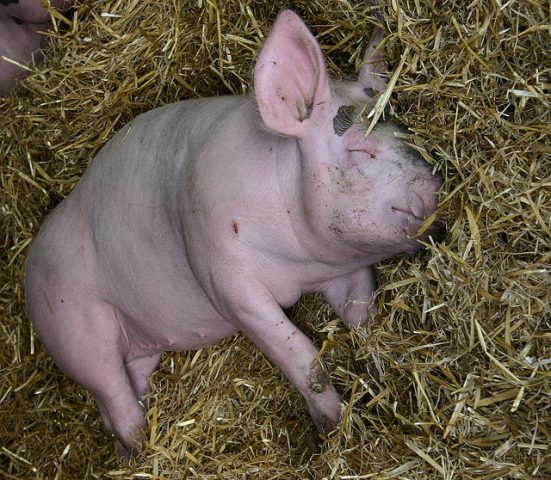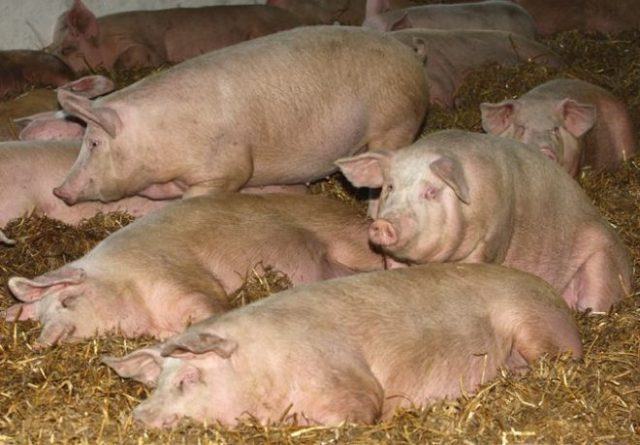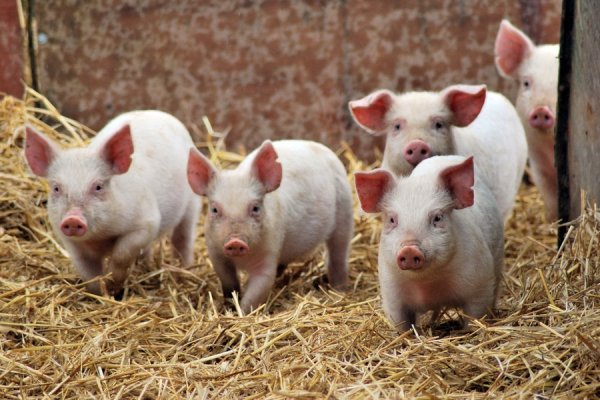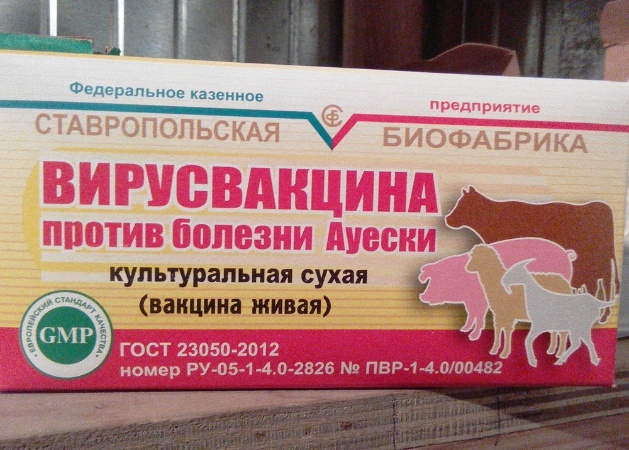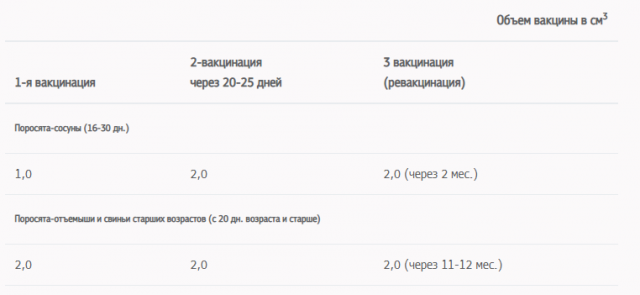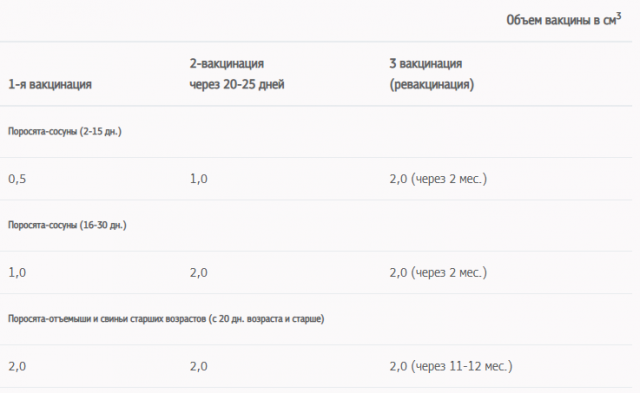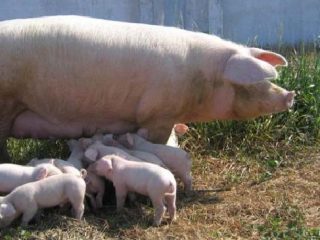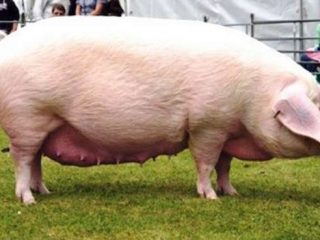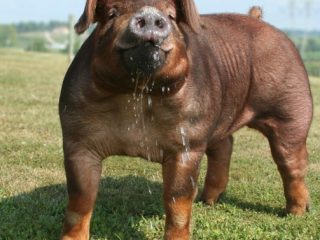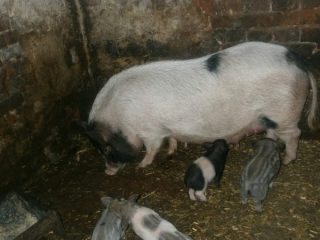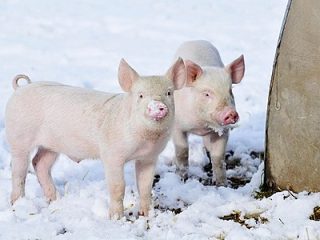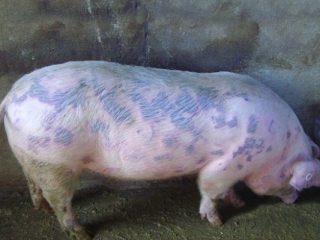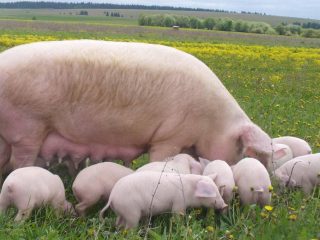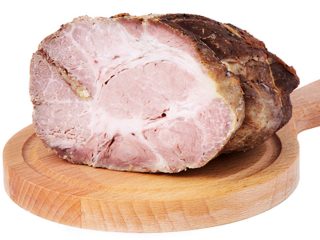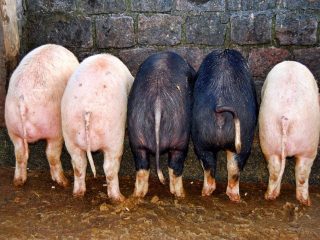Content
The Aujeszky virus belongs to a group of very common herpes viruses in nature. The peculiarity of this group is that once they penetrate a living organism, they remain there forever. Settling in nerve cells, herpes viruses wait for the slightest weakening of the immune system in order to intensify their activity.
A person also suffers from one of these viruses: “colds” on the lips or “stubs” in the corners of the mouth are manifestations of the human herpes virus. Human herpesvirus is quite harmless and does not particularly interfere with life, unlike the virus that causes AD in animals. The Aujeszky virus causes serious economic harm to the entire livestock industry, causing not only the death of livestock, but also abortions in surviving queens.
Routes of infection
All animals are susceptible to Aujeszka disease: both wild and domestic. Its name “porcine” only means that it was first isolated from pig biomaterial. Among the households most susceptible to the disease:
- piglets;
- pregnant uteruses;
- large and small livestock;
- dogs;
- cats.
In these species, cases of the disease almost always result in death.
Most animals become infected with the virus by eating the droppings of sick animals. In piglets, infection can occur through mother's milk. When kept in too close boxes, infection also occurs by contact through open skin lesions (abrasions). Rodents are often infected with the Aujeszky virus due to their common cannibalism.
The main carriers of infection on farms are mice and rats. Cats play a dual role in this case. By repelling rodents, they reduce the risk of pigs becoming infected with the Aujeszky virus. But by eating rodents, cats themselves become ill with this infection and become a risk factor.
Aujeszky's disease in piglets
Pigs become infected either from rats (the largest percentage) or from cats and dogs if they have contact with them. Often the source of infection is animals with a latent form of the disease or those who have recovered from the disease. After the disappearance of clinical signs, pigs remain virus carriers for another 140 days. The older the pig was, the longer it remains a virus carrier. Rats – 130 days.
Aujeszky's disease has several other names:
- false rabies;
- pseudorabies;
- itching plague;
- mad scabies.
This is due to the fact that the manifestations of real rabies are very diverse and often coincide with the symptoms of AD.
When the Aujeszky virus appears on a farm, up to 80% of the herd can become ill within 10 days. Sometimes it's 100%.Unlike other types of livestock, pigs have a long course of the disease. An interesting sign is that during an outbreak of AD on a pig farm, rats leave the area. But the concept of “leaving” in this case may be inaccurate. Due to their rapid metabolism, rodents carrying the virus have time to die. Such preliminary mortality of cats, dogs and rodents is often observed immediately before an outbreak of disease on a farm.
The virus is characterized by “constancy”. Having settled on a farm, he can exist there for several years. More often, cases of the disease are observed in spring and autumn, although there is no strict connection with the seasons.
Localization
Once infected, the virus spreads throughout the body, quickly penetrating the brain and spinal cord. But the first signs of the disease appear in places through which the Aujeszky virus managed to latch onto the body:
- aerogenic route. Primary localization on the mucous membranes of the pharynx and nose;
- penetration through the skin. Initially it multiplies in the damaged area, gradually penetrating deeper into the body. Then it spreads throughout the body through the blood and lymph.
During the spread of the virus, fever and vascular disorders are observed.
Symptoms of Aujeszky's disease in pigs
The incubation period can last 2-20 days. Adult pigs tolerate the disease easily, they have no itching, and the survival rate is very high. During the period of exacerbation, sows may abort their babies.
Symptoms of Aujeszky's disease in adult animals:
- increased body temperature;
- sneezing;
- lethargy;
- decreased appetite.
Symptoms disappear after 3-4 days. Damage to the central nervous system is very rare.
In piglets, the central nervous system is primarily affected.In young animals, the incidence is 70-100%. At the age of 1-10 days, piglets cannot suckle milk, weaken and die within 24 hours. Fatal outcome in piglets under 2 weeks of age is 80-100%.
When infected at the age of 2-16 weeks, the virus affects the central nervous system in piglets. In this case we observe:
- yawn;
- drowsiness;
- inactivity;
- excitement or depression;
- pharynx paralysis;
- inconsistency of movements.
Mortality is 40-80%.
Forms of Aujeszky's disease
Pigs can have two forms of the disease: epileptic and ogluoma-like. Both resemble some of the outward manifestations of real rabies.
Due to drooling and death within 20-30 hours, AD is easily confused with rabies unless laboratory testing is performed.
Epileptic form of the disease
Recurrence of seizures occurs every 10-20 minutes or when there is noise/screaming from an animal:
- pushing forward until your forehead hits the wall;
- arch in the back;
- photophobia.
Before the seizure recurs, the pig first assumes the "sitting dog" position. Also characteristic of this form are paralysis of the muscles of the body, eyes, ears, and lips. Convulsions are observed.
Ogluom-like form
The term comes from the ancient name for dropsy of the brain "oglum". The behavior of an animal with AD in this form is similar to the symptoms of oglum:
- oppression;
- unsteady gait;
- profuse drooling;
- curvature of the neck;
- pulse rate 140-150 beats/min;
With this form, the pig can stand motionless for a long time, with its legs unnaturally spread. Depending on age, death occurs either after 1-2 days or within 2 weeks.
Diagnosis of Aujeszky's disease
The diagnosis is made based on the clinical picture and laboratory and pathological studies. Upon opening they find:
- hemorrhages in the mucous membranes;
- catarrhal bronchopneumonia;
- swelling of the eyelids;
- conjunctivitis;
- blood-filled vessels of the meninges.
After the autopsy, the following is sent to the laboratory to confirm the preliminary diagnosis:
- brain;
- lymph nodes;
- pieces of parenchymal organs;
- placenta and fetus during abortion.
Aujeszky's disease in pigs must be differentiated from:
- plague;
- rabies;
- listeriosis;
- Teschen's disease;
- flu;
- edematous disease;
- food poisoning.
Treatment is prescribed after research. If there is anyone left to treat.
Treatment of Aujeszky's disease in pigs
Herpesvirus, like all viruses of this type, cannot be treated. It is only possible to “drive it inside” and achieve remission.
Therefore, in case of Aujeszky's disease in pigs, symptoms and secondary infection are treated. Hyperimmune serum and gamma globulin are useless in this case. To prevent secondary infection, antibiotics and vitamin preparations are used.
In the case of this herpesvirus, it is only possible to prevent the disease using a vaccine against Aujeszky's disease in pigs. In Russia you can buy 2 types of vaccine against swine Aujeszky virus: from the Federal State Budgetary Institution "ARRIAH" from the city of Vladimir and the vaccine produced by the Armavir biofactory.
Vaccination
The inconvenience is that the timing of immunization and instructions for use of vaccines against Aujeszky from different manufacturers differ greatly from each other.If you choose one vaccine against the Aujeszky virus, you will have to use it until the end of the course. Later it will be possible to change the type of vaccine.
Vaccine from the Federal State Budgetary Institution "ARRIAH"
They are produced in bottles of 50 doses from the negative strain “VK”. Adult livestock are vaccinated according to different schemes depending on gender and gestation. Sows and replacement pigs are vaccinated 2 times with an interval of 3-6 weeks. A single dose of vaccine is 2 cm³. The last vaccination is given no later than 30 days before farrowing.
Subsequently, already immunized sows are vaccinated once every 4 months at a dosage of 2 cm³. Vaccination is also carried out no later than a month before farrowing.
Boars are vaccinated twice every 6 months with a break between vaccinations of 31-42 days at a dose of 2 cm³. Piglets are vaccinated according to two different schemes:
- Born from immune wombs. Vaccinations against the Aujeszky virus are given from 8 weeks, using inactivated or live vaccines.
- Born from wombs not vaccinated against the Aujeszky virus. Vaccinated in the first days of life. Vaccination is carried out twice with a break of 14-28 days.
This vaccine provides immunization for no more than six months.
In fact, the first one is no different in its properties from the vaccine from the Federal State Budgetary Institution “ARRIAH” from Vladimir. The second almost corresponds to advertising and provides protection against the Aujeszky virus for 15-16 months. It has a shelf life of 1.5 years.
Virus vaccine "VGNKI"
The immunization period is 15-16 months if vaccination schedules are followed.This vaccine has a rather complex scheme, differentiated by age and the prosperity/disadvantage of the household. The vaccine is diluted in the same way as others: at the rate of 2 cm³ per dose.
Vaccination in a prosperous household
Vaccination in a farm unaffected by the Aujeszky virus
Prevention of Aujeszky virus in pigs
If there is a threat of the emergence of the Aujeszky virus, preventive vaccination is carried out according to the instructions. In the event of an outbreak of the disease, the farm is quarantined and a set of measures aimed at disinfecting the territory is carried out. A farm is considered free from AD if it produces healthy offspring within six months after the cessation of vaccination.
Conclusion
Aujeszky's disease, if vaccinated correctly and on time, will not cause serious harm. But you can’t hope for luck in this case. Aujeszki virus can be transmitted by any domestic animal.
